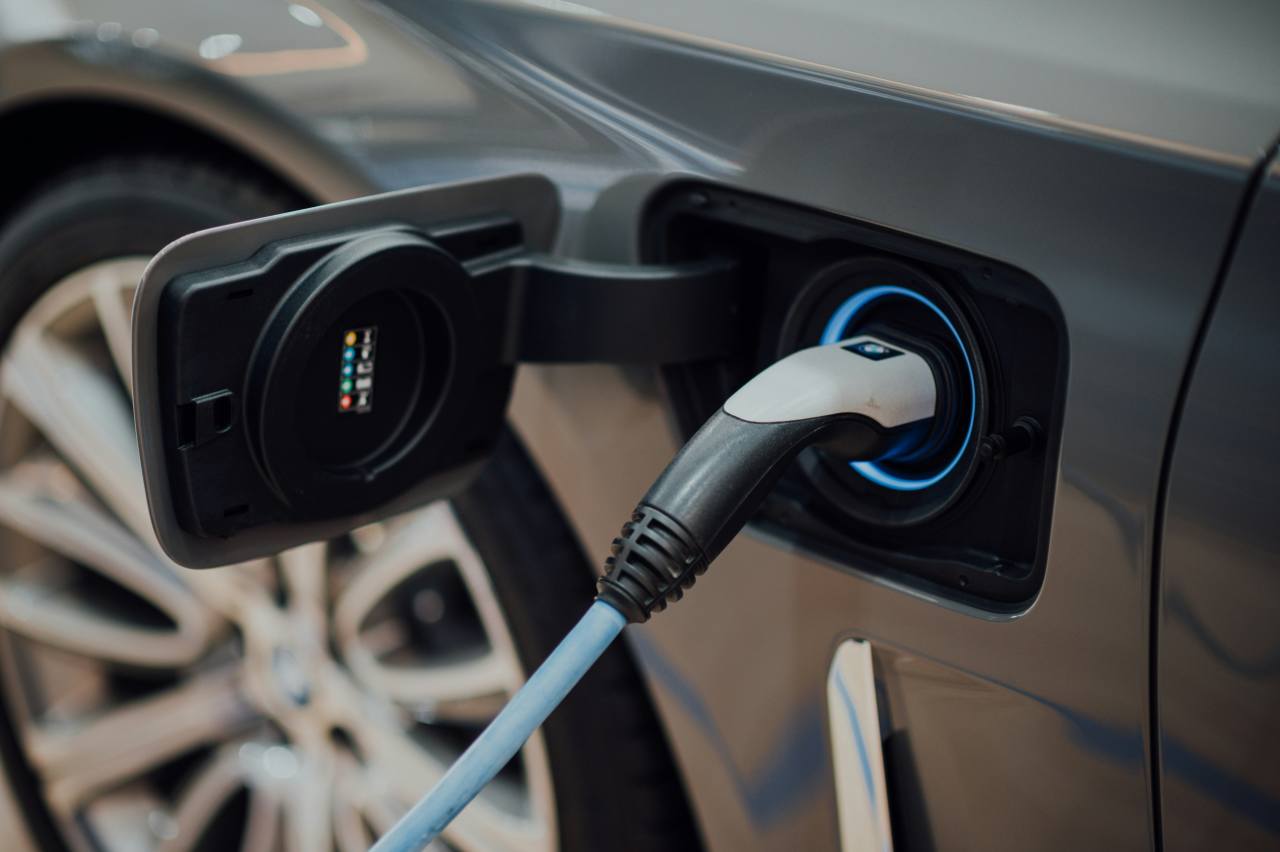Sure, in 2019 the world is abuzz with the talk of hybrids and EVs, what with eco-friendly motoring suddenly bang-on trend.
But Mitsubishi can genuinely claim to have been surfing that green wave way back before it was cool, with the Outlander PHEV, the brand's plug-in hybrid SUV, first launching in Australia in 2014.
It’s just been updated for the 2020 model year with a bigger engine and a bigger battery, and there’s better interior tech, too. And because it’s a plug-in hybrid, Mitsubishi says its Outlander is a perfect tasting dish for those considering a shift to an EV, but who perhaps aren't ready to make the full leap.
So let’s go find out if they’re right.
Mitsubishi Outlander 2020: Phev (hybrid) ES
| Engine Type | Inline 4, 2.0L |
|---|---|
| Fuel Type | Unleaded Petrol/Electric |
| Fuel Efficiency | 1.7L/100km (combined) |
| Seating | 5 |
| Safety Rating |
|
Does it represent good value for the price? What features does it come with?
Let’s get the hard stuff out of the way early; the 2020 Outlander PHEV is more expensive than its predecessors, no matter which one you shop for.
The Outlander PHEV arrives in three trim levels - the ES ($46,990 MSRP or $50,990 drive-away), then the ES + ADAS pack, which adds $1000 to both those numbers, increasing the cost to $47,990 ($51,990 drive-away), and finally the top-spec Exceed, which is $55,990 ($59,990 drive-away).
The ES arrives with a fairly stacked equipment list, including 18-inch alloys, LED DRLs, auto headlights and wipers and standard roof rails outside. In the cabin, expect cloth seats that are heated in the front, a new 8.0-inch screen that’s both Apple CarPlay and Android Auto equipped, a new lumbar support control for the driver, push-button start, and dual-zone climate control with a vent for rear riders.
.jpg)
Stepping up the ADAS (Advance Driver Assistance Systems) pack, which is a trim level aimed largely at fleet customers, matches the ES trim level exactly, but then adds some key safety stuff like lane departure warning, auto high beams and adaptive cruise control.
Finally, the Exceed trim gets leather seats, standard navigation, a better stereo, a powered boot, a sunroof and some nicer interior trimmings, as well as a heap of standard safety kit that we’ll drill down on under the Safety sub-heading.
All up, though, you’ll be paying up to $2000 more for the updated Outlander PHEV - a jump Mitsubishi says is justified by the new multimedia screen, the bigger engine and higher battery capacity.
EV Specs for Mitsubishi Outlander 2020
| Drivetrain | Plug-in hybrid |
|---|---|
| Battery capacity | 13.8kWh |
| Battery type | Lithium-ion |
| Electric range | 54km (NEDC) |
| Plug type | J1772 & CHAdeMO |
| DC charge rate | 50kW |
| AC charge rate | 3.7kW |
| Electric motor output | 60kW/137Nm (front), 70kW/195Nm (rear) |
| Combustion engine output | 94kW/199Nm |
| Combined output | 94kW/199Nm |
| Petrol efficiency | 1.9L/100km |
Is there anything interesting about its design?
It’s business as usual for the Outlander PHEV, with the exterior design largely unchanged for this 2020 update.
Now whether that’s a bad thing obviously depends on whether you like the outgoing vehicle, but one thing is certain - this Outlander offers no Tesla Cybertruck style, erm, challenging design features. In fact, it looks an awful lot like a Mitsubishi SUV.
This is no rolling billboard advertising your eco credentials, then. And for a lot of people - myself included - that counts as a positive.
The front-end view is easily the most powerful, with Mitsubishi’s shiny black-and-silver grille treatment looming large in any rear-view mirror it's spotted in, but we also like the swollen shoulder lines that run beneath the side windows, as well as the arch-filling alloys.
.jpg)
All up, they give the Outlander a vaguely premium look from the outside - a feeling only enhanced in the bright Red Diamond of our test car. On colours for a moment, there are only four available; the red, as well as Ruby Black, Titanium Grey and Starlight (white).
Inside, the new 8.0-inch screen takes pride of place in the dash, and the air-con controls have been given a more modern-feeling tickle, but elsewhere it’s largely more of the same for Mitsubishi’s electrified SUV.
And that means a simple and unfussy design theme front and back, interspersed with a combination of hard plastics and soft-touch materials. How much of each, though, depends on how much you spend.
How practical is the space inside?
Mitsubishi makes a big deal out of the Outlander’s practicality perks, and with good reason; here’s an electrified vehicle that can carry five people, tow 1.5 tonnes, and even tackle some off-road stuff without breaking much of a sweat.
Let’s start with the key stuff. The Outlander PHEV measures in at 4695mm in length, 1800mm in width and 1710mm in height, which is about bang-on the conventional fuel-powered models.
.jpg)
As a result, you can expect similar space inside the cabin, with enough room for up-front riders, and a spacious rear seat that provided enough head and legroom for my 175cm frame to ride in comfort.
In the boot, you’ll find 463 litres of luggage room, with an extra 35 litres hidden in an under-floor cargo box. And unlike some hybrids, the Outlander PHEV won’t shy away from some light-duty towing either, with Mitsubishi claiming a 1500kg (braked) towing capacity.
Finally, you can expect two ISOFIX attachment points, one in each window seat in the back, as well as two new USB connections points, so there's device charging galore.
What are the key stats for the engine and transmission?
It’s here we find the biggest change for the 2020 Mitsubishi Outlander PHEV, with a bigger petrol engine and a higher-capacity battery combining to deliver what the brand promises will be a “sportier” drive.
First, under the bonnet there lurks a 2.4-litre, four-cylinder petrol engine which will deliver some 94kW at 4500rpm and 199Nm at 4500rpm - up from 87kW and 186Nm from the old 2.0-litre engine.
.jpg)
The petrol engine works in conjunction with twin electric motors, (60kW/137Nm front, 70kW/195Nm rear), and though the maximum power produced remains 94kW, it does allow the Outlander to switch between petrol and electric power at will.
That power is fed through a single-speed automatic gearbox and ultimately sent to all four wheels.
How much fuel does it consume?
The bigger battery, now 13.8 kWh, doesn’t actually result in a longer driving range, with Mitsubishi still claiming a 54km EV range, according to the NEDC cycle. Stick to that, and your fuel use will be zero.
Engage the petrol engine, however, and Mitsubishi then claims a combined fuel-use figure of 1.9 litres per hundred kilometres, and C02 emissions of 43g per kilometre. The Outlander PHEV is fitted with a 45-litre fuel tank.
.jpg)
When it comes time to recharge, you can expect it to take around seven hours using a plug at home, while using a CHAdeMO high-speed charger should give you 80 per cent capacity in 25 mins.
But the point Mitsubishi makes, and it's a good one, is that owing to the petrol engine, you really never need to worry about public charging. Instead, should you run out battery juice, simply drive home with the petrol engine and plug in when you get there.
What's it like to drive?
It’s a slightly confusing experience, climbing behind the wheel of the Outlander PHEV. Not least of which because the thing that takes pride of place in this eco-friendly SUV’s centre console is a massive “Sport” button, conjuring images of slaying mountain passes, all while saving the planet.
The reality, though, is just a little different. Bigger engine or no, the Outlander is no backroad bandit.
In fact, I think it does its best work away from Sport mode, which can leave the accelerator a little too twitchy, and give you a sort of lurching effect should you so much as breath on the throttle, but then fail to backup that promise with meaningful, neck-snapping acceleration. The sprint to 100km/h, for example, will take 10.5sec, which is down from 11 seconds in the outgoing car, but still not overly quick.
Remember, this is a family friendly (and eco-friendly) SUV, and so you shouldn’t be surprised to learn it behaves at its finest when it is treated as such, accelerating smoothly, switching between electric and petrol modes without great fuss, and genuinely going about its business with a quiet confidence.
.jpg)
Besides, like most electrified cars, slipping behind the wheel of the Outlander PHEV does strange and mysterious things to your driving style. Believe me, no matter how heavy your right foot is, you can’t help but want to drive the Outlander gently, trying to prolong its battery-only range and stop the petrol engine kicking in. It’s like the eco-friendly version of chasing lap times, and it is strangely addictive.
On the EV side, you can choose between Charge mode (which prioritises battery charge) or Save mode (which maintains the battery charge), and to help the battery stay charged, you can up the regenerative braking via the gearshift paddles, too.
The truth is, though, that the Outlander drive experience really isn’t defined by its eco credentials, but by its sense of normality. It behaves in much the way you expect an Outlander to behave, with the fuel use (or lack of it) an added perk.
The steering is not overly engaging, but it’s light and easy, and the suspension focuses more on softness than sportiness. Is it as fun to drive or as engaging as some of its more modern rivals? Not really. But it's big, spacious, familiar and easy.
Warranty & Safety Rating
What safety equipment is fitted? What safety rating?
The Outlander PHEV ES arrives with camera-based AEB (up to 80km/h), a reversing camera, rear parking sensors, hill start assist and seven airbags as standard kit. Opting for the ADAS pack then adds Lane Departure Warning, adaptive cruise control and automatic high beams.
Finally, the Outlander Exceed will add an around-view monitor, lane change assist, blind-spot monitoring, rear cross-traffic alert and what Mitsubishi calls its Ultrasonic Misacceleration Mitigation System, which detects if you’ve accidentally selected Drive instead of Reverse (or vice versa) and will dull the accelerator and sound a warning to let you know.
The Outlander was awarded a full five-star ANCAP safety rating when tested in 2014.
What does it cost to own? What warranty is offered?
The Outlander PHEV is covered by a five-year, 100,000km warranty, with the batteries on board covered for eight years or 160,000kms.
Mitsubishi’s capped-price servicing program limits service costs to $299 for each of your first three visits to your dealership, which will be every 12 months or 15,000kms.
Verdict
When you think about it, plug-in hybrids really are something of a best of both worlds proposition - an electric motor for your weekday commute, and a petrol engine for your weekend adventures. It also means you can almost always plug in at home, so there's no need to queue for a public charger or worry much about how long it takes to recharge.
If you're looking for a plug-in hybrid with space for the family and more of an adventurous spirit than most, the Outlander PHEV is worthy of investigating.
Note: CarsGuide attended this event as a guest of the manufacturer, with travel and meals provided.
Pricing Guides


.jpg)


.jpg)

.jpg)
.jpg)
.jpeg)

.jpg)

